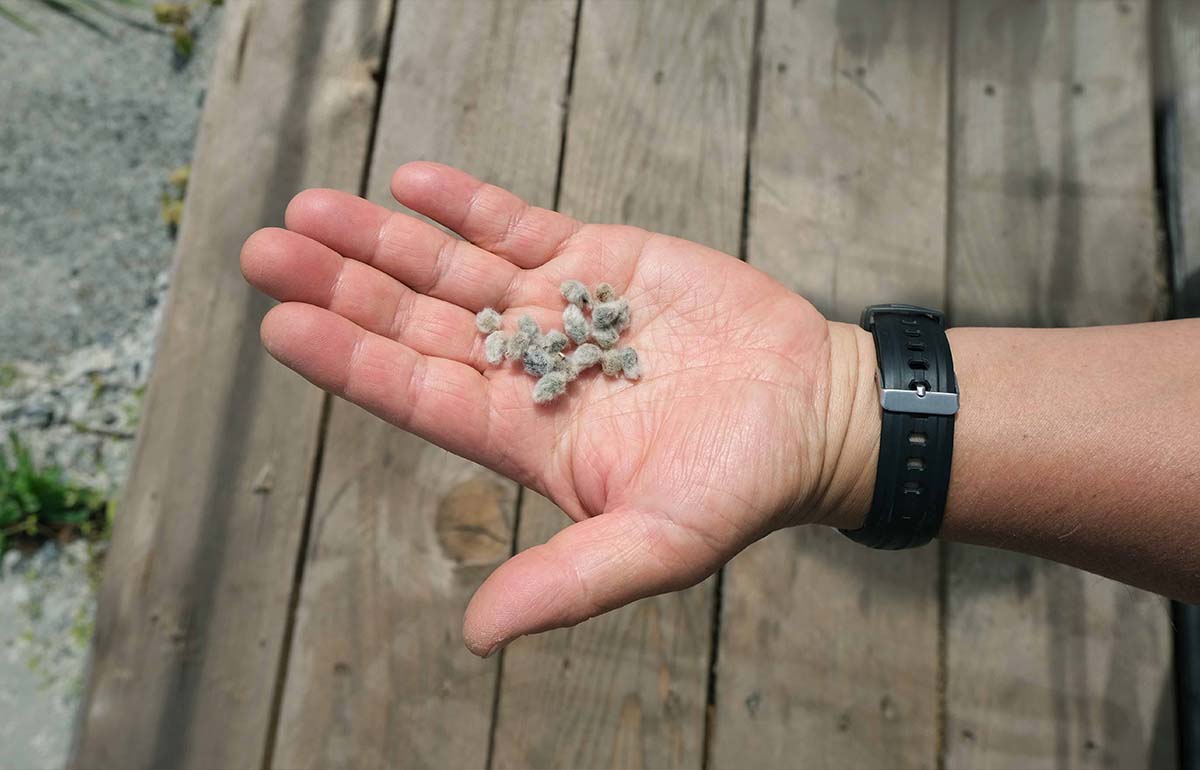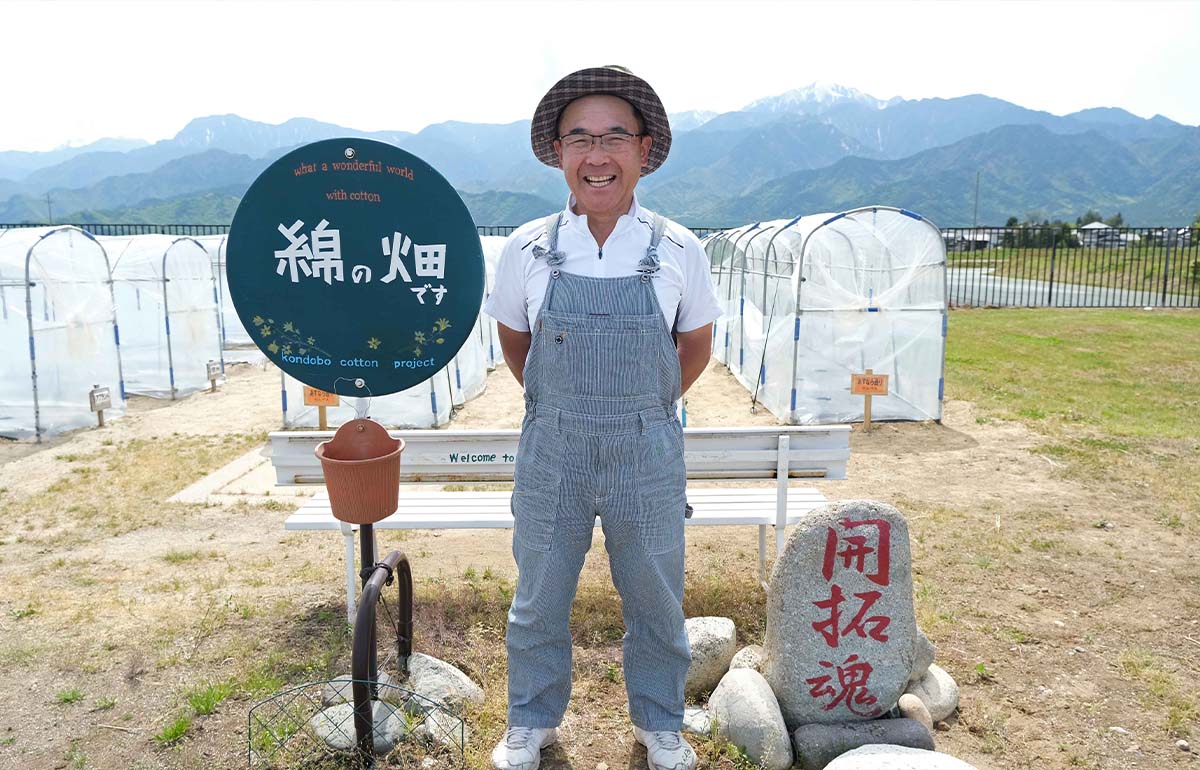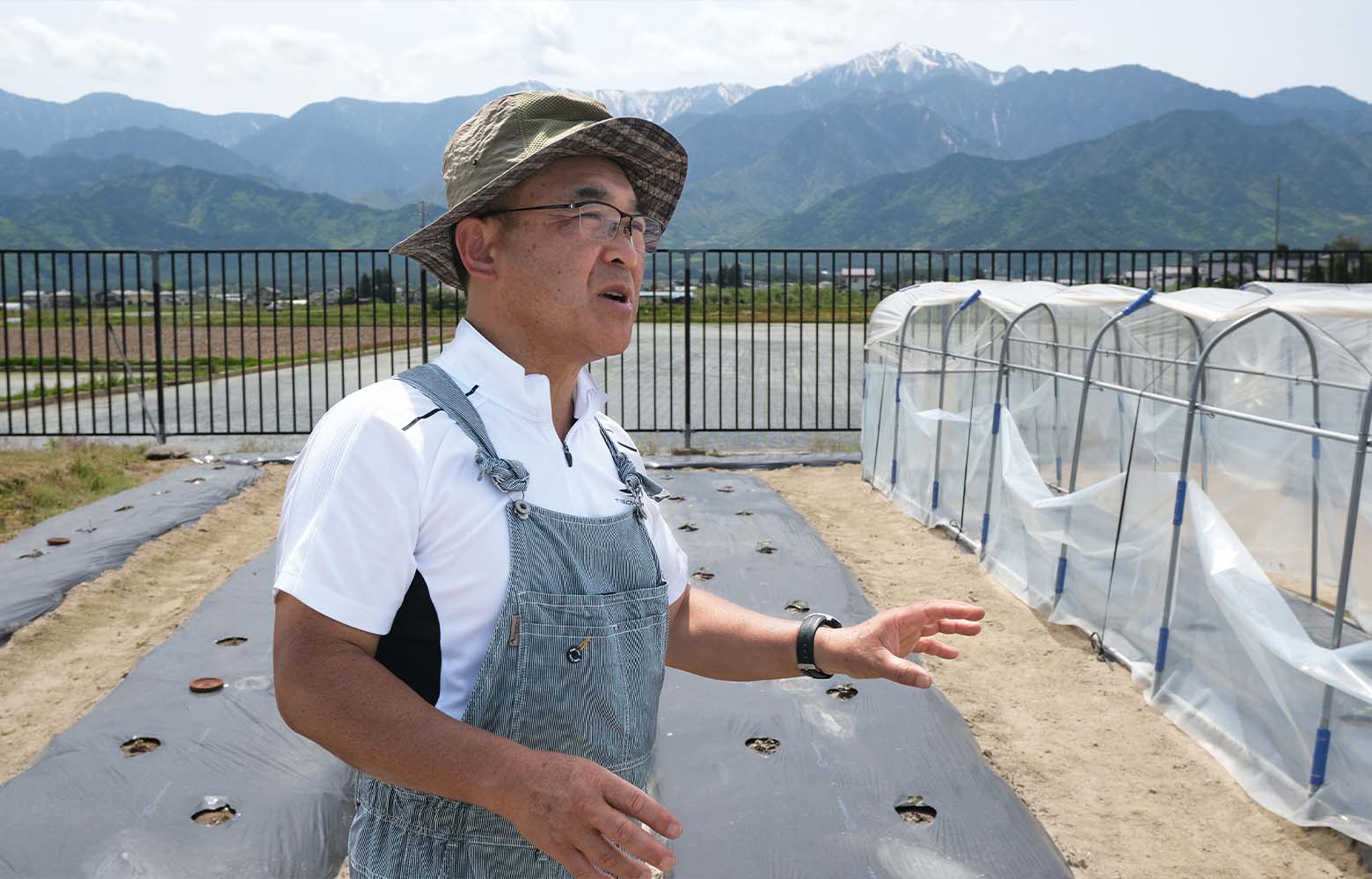
Interview
This is the story of a person who continues to challenge the cotton fields in Omachi City in Shinshu,
a snowy region surrounded by the beautiful Northern Alps.
One of the few cotton-based spinning mills in Japan today is located in Omachi City, Nagano Prefecture. The factory, which continues to produce yarn using both good old-fashioned and cutting-edge technology, established a cotton field in a corner of its premises several years ago and has been harvesting cotton every year, albeit in small quantities. Why was the cotton field established here? What has sprouted and borne fruit in the cotton fields? We interviewed Mr. Tsutomu Isshi of KONDOBO Omachi factory, who is also the guardian of the fields.

Together with Omachi Plant
—— How many years have you been with the company this year?
It's been 39 years this year? I am originally from Omachi, my hometown, and I joined the Omachi factory when I was 26 years old as a mid-career hire. Until then, I had experienced a completely different type of business, such as finance... For some reason, people look at me suspiciously when I say the word "finance" (laughs). I changed jobs because I wanted to work in manufacturing with my feet firmly planted on the ground. Since then, I have been working at the Omachi Plant. I have been in charge of the rubber rollers, which are an important part of the quality of spinning, for a long time, but now I am also in charge of cotton cultivation.
—— Have you been working at the Omachi Plant since it was established?
I joined the company in October 1982, before the factory was completed. The factory building was almost complete, and we were just about to start installing machines. Actually, I had no idea at the time what this factory was going to make...rumor had it that it was going to make space suits (laughs).
—— So you know all about how this factory has changed?
Yes, the history is well documented in the notebooks of the current department. The biggest change was when Kondo Bosho started developing new fibers. That year was 2015, a year of change, and we were trying to create something new by consolidating many things. Everyone at the factory and the company was in a state of exploration, and no one knew what kind of yarn would be produced. Until then, we had been using only regular 100% cotton yarn, and there was a lot of other knowledge and technology that we didn't know about, so we asked all the employees for their ideas and started thinking about "What kind of things do you want to make? So we started by asking all the employees for their ideas and thinking together about "what kind of things do you want to make? Well, that was the start, and it has been six years now.
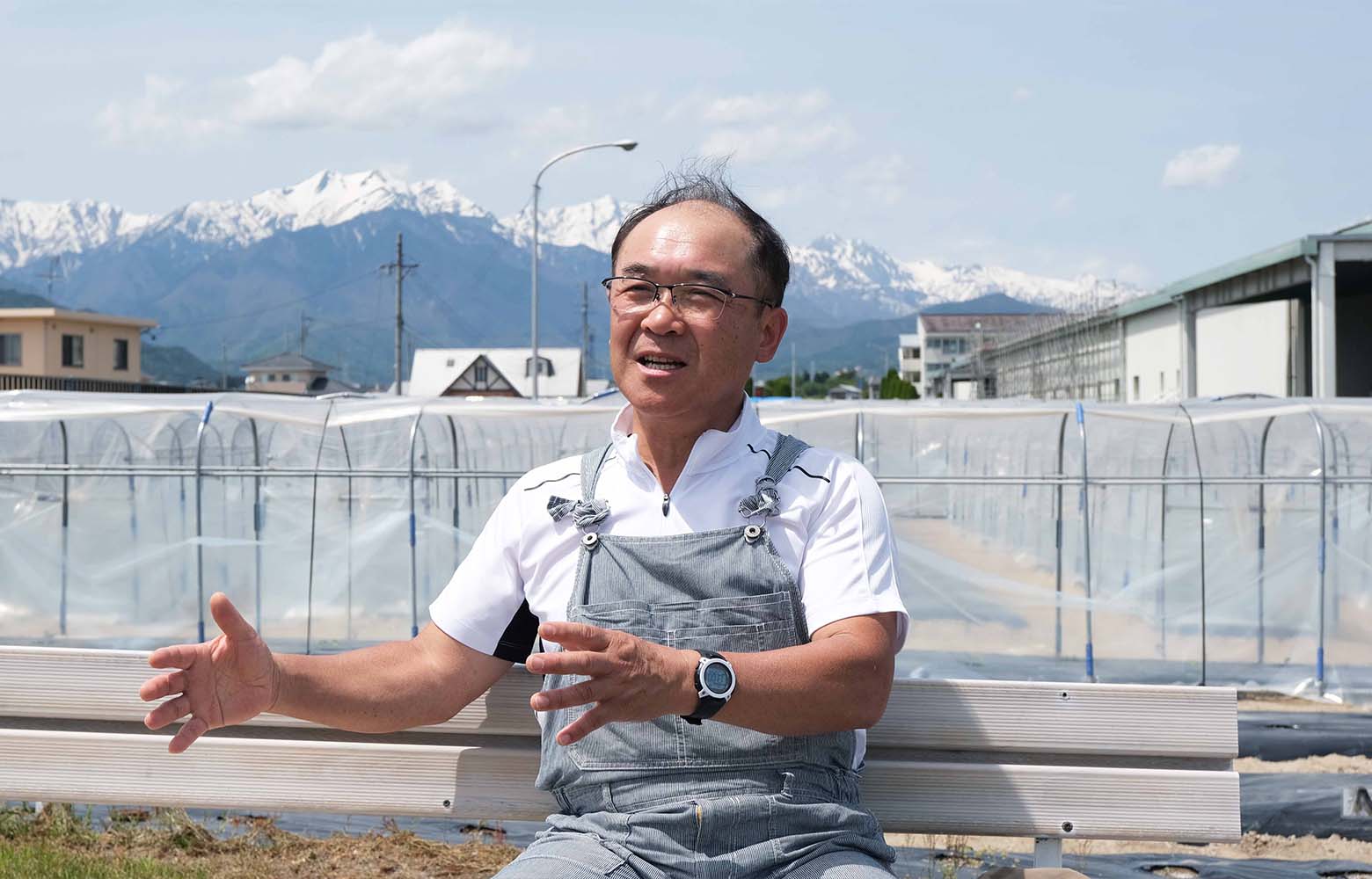
—— I'm sure the people at the plant had a hard time getting used to it.
I started using cotton of different origins and varieties than before, and I used to make only well-rounded, uniform yarns, but now I go out of my way to make uneven yarns, and so on. I've done numerous studies, but I guess more of them didn't work. Among them, there are a few that have been successfully commercialized.
—— You remember the history of the Omachi Plant as if it were a living history.
I wish I could be a living dictionary, but I soon forget... even when I do remember, there are a lot of blank pages (laughs). Well, even if I don't remember, the events of this factory and what kind of threads have been produced are almost always recorded. A company is an accumulation of data. The accumulation of data leads to the accumulation of technology, which I think is the foundation of a company's ability to develop and respond. And I hope to deliver products that will please consumers.
The Meaning of Growing Cotton Trees
—— How did you come to grow cotton in your factory?
Let's try something new from now on!" When we looked again at cotton, we realized that although we have been involved in spinning, cotton, and cotton for a long time, few people know how cotton is grown, harvested, and delivered to us. We realized that very few people know how cotton is grown, harvested, and delivered to us. So we decided to start growing cotton by ourselves, and this project was born.
—— What is the purpose of growing cotton in a factory?
By actually growing cotton with our own hands, we can learn what cotton really is. By actually growing cotton with our own hands, we can learn what cotton really is. This will help us to further deepen our understanding of the properties and characteristics of cotton. The understanding gained will lead to an improvement in the level of spinning mills, which in turn will lead to an improvement in quality, and will also create a sense of attachment to the product. This is one of the objectives. The other is to try a domestic production system for everything from raw materials to finished products, and we wanted to know what kind of products would be made from the cotton produced here in Omachi. The biggest significance of this project was to learn more and more about cotton. Another purpose of this project is to contribute to the local community through the cotton fields, and to communicate this information to the public.
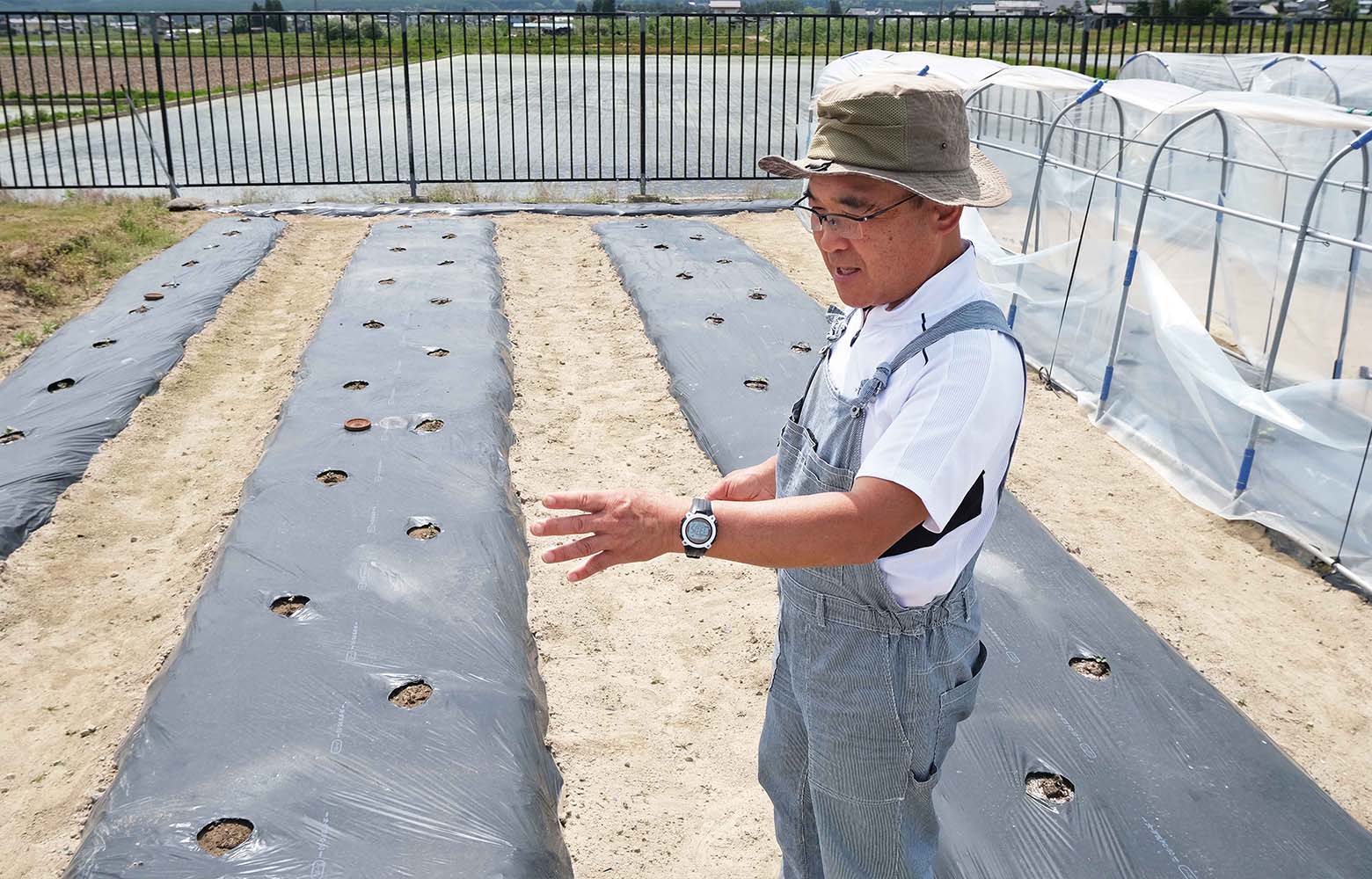
—— How did you come up with the idea of doing this project, Isshi?
I was the first one to raise my hand...or rather, there was no one else to raise his hand. I have a curious side to me, and since my family was a part-time farmer and I helped out a little, I had some knowledge of agriculture. I think it all started when I gave my hand in support of this project, just casually at first. But when it came to the actual work, it was impossible to cultivate the land alone. I had help from various departments, and I had to operate heavy machinery to dig up the soil myself, but I had to dig at least 30 cm deep. We could take out the big stones with heavy equipment, but we couldn't take out the smaller ones with heavy equipment, so we had to do it by hand... It was dangerous and hard work. If we wanted to actually remove the stones, we had to dig up to our waists.
—— I saw a stone at the entrance to the field with "pioneer spirit" written on it. Did it come from this location?
That's right. I think those stones are about as big as you can get from this land, right? When we finished removing the stones, we flattened them with the tractor, and then we made rows and rows to cultivate the field together. Our first cotton field was about 13 meters long with 5 rows and about 90 cotton plants. Now that we are growing more varieties of cotton and need a certain yield per variety, the field has been expanded to about 330 square meters.
—— What varieties are grown in this vineyard?
We are currently growing a total of 10 varieties of cotton in this field, including Cerves and Upland for upland cotton (*1), Shinshu and Oshima native for Asian cotton (*2), and Japanese cotton (*3). Asian cotton (*2), Japanese cotton (*3) native to Shinshu and Oshima. Colored cotton (*4) includes brown cotton and green cotton. We are also growing hybrids and special varieties on a trial basis. Each has its own characteristics. Japanese cotton, which is resistant to rain, and Selbes, which bears early, are easy to grow, while upland cotton is generally prone to attract pests. Also, Japanese cotton, which until now has been considered unsuitable for spinning, has unique and excellent characteristics, and it would be interesting to make products that take advantage of these characteristics in the future. The seeds also have their own characteristics. Land cotton has larger seeds than Japanese cotton, and depending on the variety, it may be easier or harder to remove the fiber from the seeds during the ginning process.
(*1) Native to Central and South America. The most widely grown cotton in the world, including the United States, Asia, and Africa. It accounts for about 90% of the world's cotton production.
(*2) Originally from India. Spread from India to China and Japan. Fibers are relatively thick and short.
(*3) A type of Asian cotton. Cotton that has been cultivated in Japan since the Edo period.
(*4) Cotton with brown or green fibers instead of the common white cotton. It has not been actively cultivated due to the difficulty of dyeing, but it is being reevaluated in recent years in terms of reducing environmental impact because colors and patterns can be produced without dyeing.
—— What will you be doing on a yearly basis to grow "cotton?"
Yes, the work starts in about March. The very first thing I do is to raise the soil with a tractor on all sides and come up with a full blueprint of the field. After that, I spread fertilizer, make ridges, and lay down mulch vinyl, which raises the surface soil temperature and prevents weeds. Then the plastic greenhouses are assembled, after which the seeds are finally sown. I sowed the seeds the other day with children from a local nursery school. Incidentally, apart from seeds, I actually grow and plant seedlings in pots as well. This way, they grow faster and can be harvested. Especially in Omachi, where the weather gets cold early, we still need to do more research on this kind of early cultivation. Once the seeds are planted, it's time to water them. In the beginning, I water almost every day. When the seedlings have grown to a certain extent, I put up a support pole. Cotton trees are vulnerable to wind and heavy rain, so if I don't leave them up, they will fall over. I also control pests. When the tree grows to a certain size, I cut off the branches at a height of 90 cm and grow lateral branches so that the tree will bear more fruit and grow larger. After that, I remove useless branches, weed, and keep an eye on the crop until harvest time. There are other detailed tasks, but this is the approximate flow of the work. On a nice day like today, I lift the overhead vinyl over the greenhouses. It's not always open, but it's raised or lowered depending on the weather.
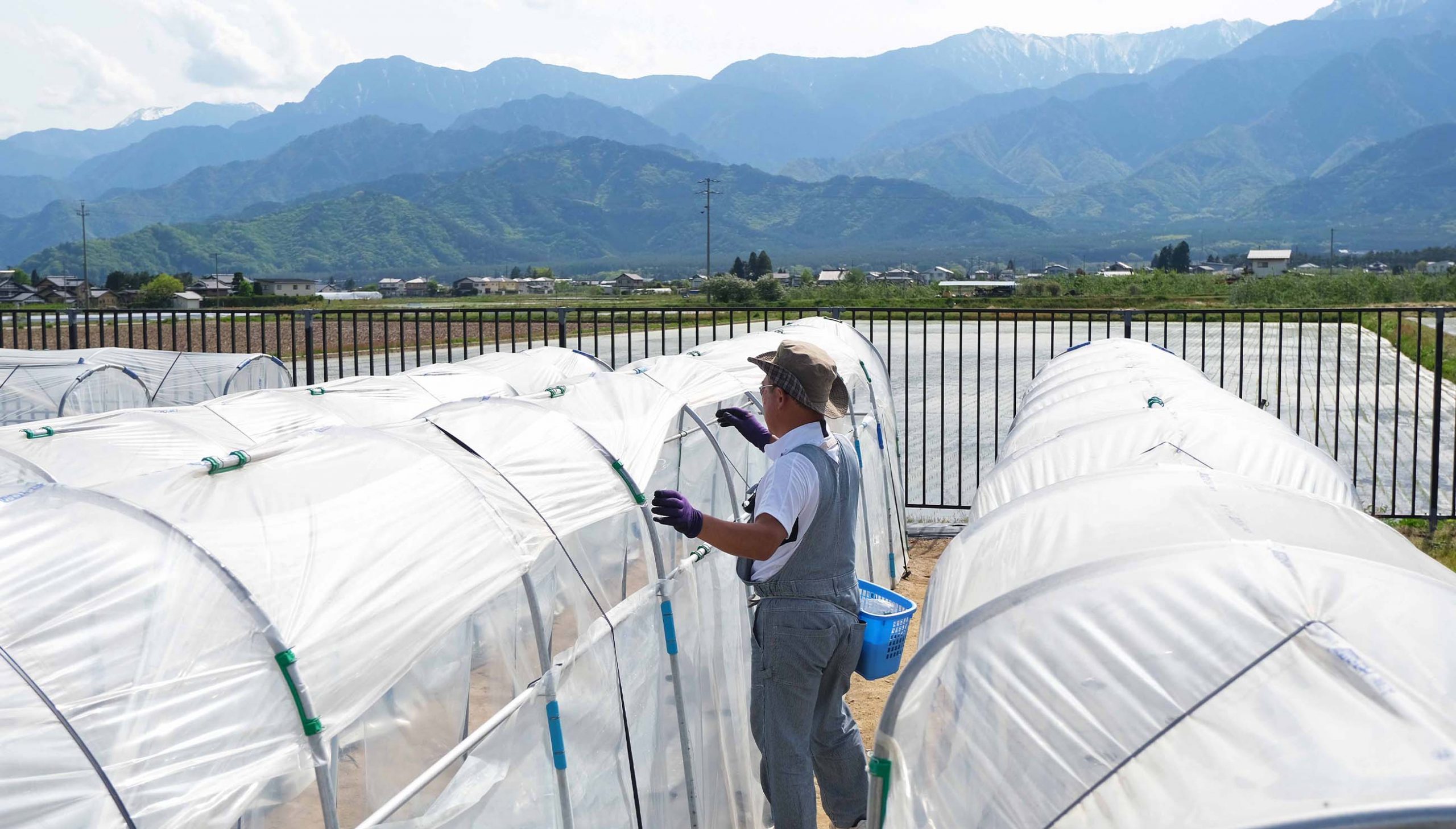
—— Basically, you are the sole grower, aren't you?
Now, I'm mostly on my own. When I was cultivating the land, I had a lot of help, but when it comes to day-to-day care, I am too busy at the factory site. If there is someone who wants to succeed me, I would like to work with them while teaching them, but it is not something that can be done overnight. When we started preparing the field, the professors of the Faculty of Textile Science and Technology at Shinshu University gave us a lot of guidance on cultivation, which was very encouraging, and we were eventually able to get the cultivation itself on track, for which I am very grateful. At first, the Shinshu University professor said, "The soil is fine and well drained, so cultivation is possible. However, Omachi is a cold area, and in November, the North Alps bring cold and frost, so it can be tough. In addition, no one in the area had any experience growing cotton, so when we asked the local JA, no one knew anything about growing cotton. I was worried and wondered what would happen when I found out that there was no culture of cotton cultivation in the area historically, but I changed my mind and said, "If no one has ever done it before, I will do it myself, and I will do it until I can do it.
—— What are some of the difficulties in actual cultivation?
It's a lot of hard work, but it's also very difficult because we are dealing with nature...it's difficult every year. Lately, there are many days with strong winds, and the plastic greenhouses are sometimes blown away or torn down. Even on weekends and holidays, we can't neglect the cotton, and there are so many pests that insect control is essential. When growing in greenhouses, heat is inevitably generated, so it is easy for pests to appear. The area around the factory is a countryside as far as the eye can see, and insects could come from anywhere. That is why I mow all the grass where I can. Aphids, leafhoppers, and last year, we had a big outbreak of onchid whiteflies. Then there are the spider mites that always appear in the summer, and they are a real problem...the leaves die off. Recently I finally noticed that at night the bugs are attracted to the streetlights that stand there on the premises. I'm thinking of asking them to turn off the streetlights this year. I would like to try some effective pest control measures in the future. Also, Omachi has relatively long hours of sunlight and is at a high altitude, so I get sunburned a lot. I get so dark that people worry about me.
—— The sun is still shining today...did you have any other failures?
I've learned that you can't be greedy. Once, when I sprayed lime nitrogen to increase the yield, the cottonwoods became soft and the branches drooped. I managed to fix it by hanging it from a pole with string. I regretted it so much at the time. I'm finally getting the hang of it, but I'll have to keep experimenting with different parts of it.
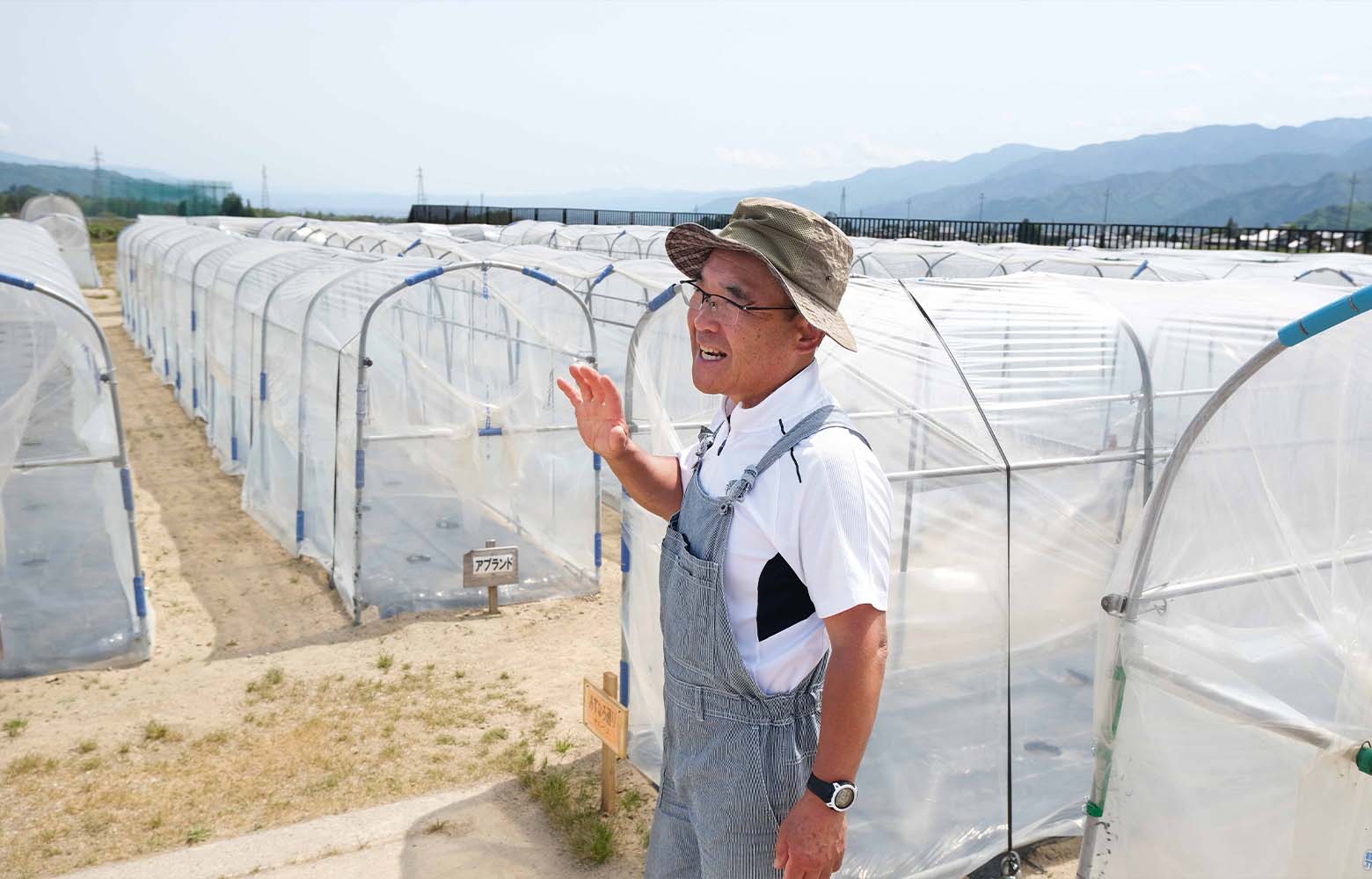
Born from the cotton fields
—— I know it is a lot of work, but how much cotton does a field of this size yield?
This year's crop is 420 plants, and the target is approximately 40 kg including all varieties. After harvesting and ginning, we are aiming for about 13 kg of cotton after removing the seeds. It may be hard to tell from the weight, but in terms of T-shirts, it is about 10. It depends on the variety and quality.
—— What is the use of that harvested cotton?
The company is currently considering this. Cotton is a material whose texture cannot be determined until it is actually made into a product, so we are thinking of making a product of any kind, but it has not yet actually materialized. If we can harvest the cotton this year, do you feel like we can put together a certain amount? We already have a certain amount, but only just barely enough to make a product. If we fail, it will be the end of the project, so we are asking them to proceed with caution. And the final product is something that I, as well as the people involved in the project and the local community, are really looking forward to. I want to see and touch the texture of the fabric made from cotton grown in Omachi. By turning it into a product, we can really realize the whole process from start to finish, from 1 to 10, and I really hope to fulfill the ultimate goal of the project.
—— You mentioned that people in the community are expecting to see you, do you have any interaction with them?
For six years in a row, we have had children from the Asunaro Nursery School here to experience sowing seeds and picking cotton. When this year's elders enter elementary school, children from the first to sixth grades will have had the opportunity to experience the cotton fields here. About a year ago, the Omachi City Council of Social Welfare asked us to teach them about cotton cultivation, and we planted seeds together. Through this guidance, cotton cultivation is gradually spreading among the city's residents, leading to the "Kotokotoko Cotton Walking" event and the "Cotton Club" activities.
—— What kind of activities are the "Kotokotoko Cotton Walk" and the "Cotton Club"?
The "Kotokotoko Cotton Walking," an activity led by the Omachi City Council of Social Welfare, is a campaign in which citizens are asked to grow cotton in their gardens and planters and walk around their homes to check on the growth of the cotton. This is connected to the welfare activities of watching over and talking to people. I have been going to another activity called "Cotton Club" for two years in a row to give a lecture on sowing seeds, and everyone was really enthusiastic and asked me a lot of questions. The cotton harvested there is used to stuff stuff stuffed toys and for other welfare activities. The reason for all of this is that the father of one of the nursery school children happens to be a member of the CSW, and through information from local residents, cotton farming has become known little by little. From the very beginning, we wanted to contribute to the community through this project and disseminate information widely, so to be able to connect with the community through cotton like this is the most gratifying thing, and it was worth the effort to cultivate the land and develop the cotton crop together. Speaking of which, a teacher from an agricultural high school came to ask about cotton cultivation... This kind of expansion into the local community is exactly what we had hoped for, so we are truly happy and full of gratitude to everyone.
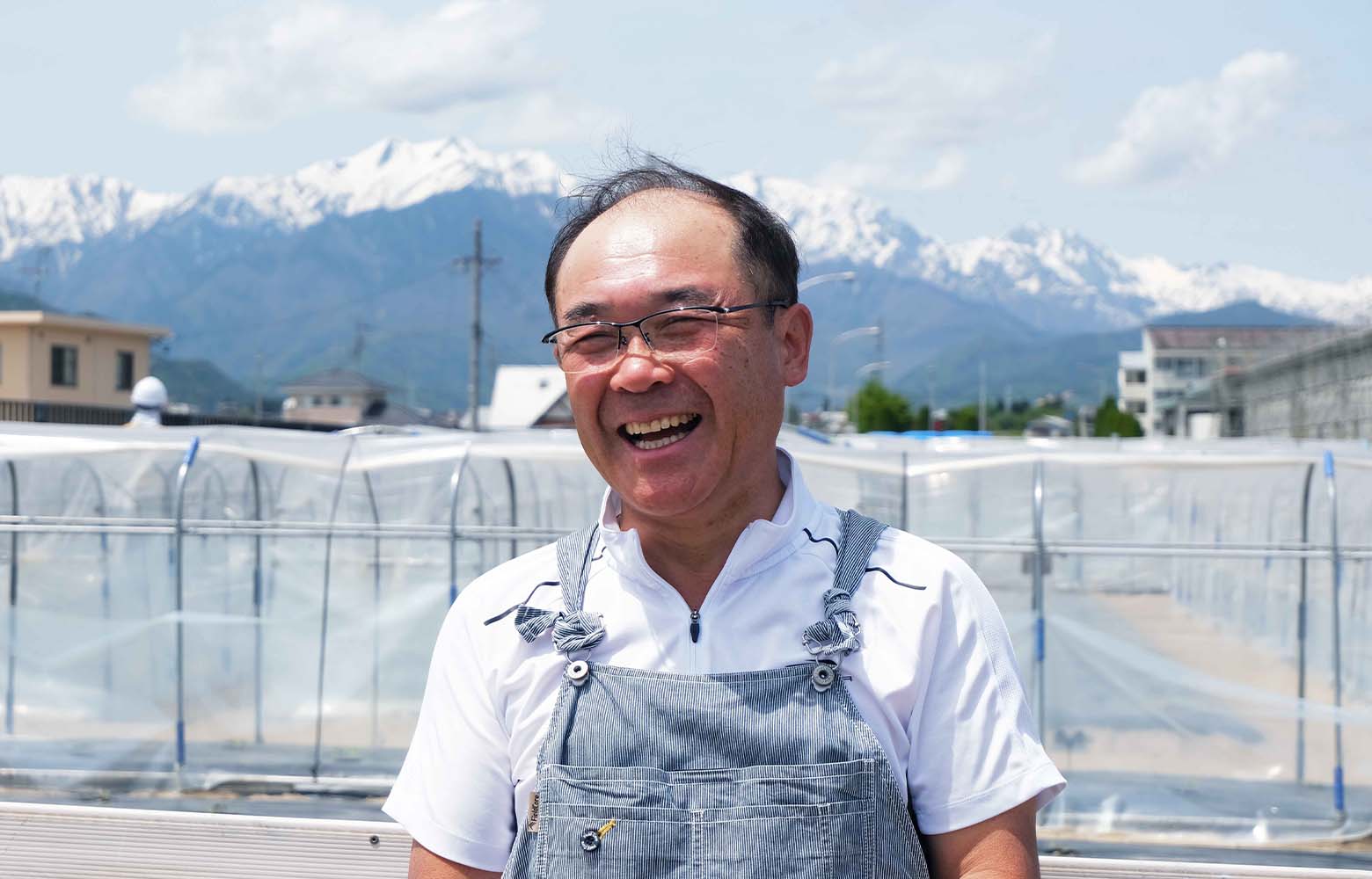
—— Has your view or attitude toward cotton changed from before you started working in the cotton fields to now?
To be honest, it's changed. I can tell whether the cotton is mature or immature by how long or short it is, and I can tell by touch what I could not by inspection. When I find cotton that is slightly discolored, I am now able to check to see if it has been affected by insect pests. I realized for the first time that the sugar content of cotton becomes high (*5) due to insect pests, and I also began to know how the imported raw cotton was cleaned at the local gin factory. By the way, when I see small pieces of cotton or cotton waste on site, I think to myself, "This cotton is enough for one cotton ball. It's a lot of work to grow this..." I understood how the farmers felt. Now that I understand the feelings of the farmers, I began to think that even one piece of fallen cotton is a waste. I wonder what I can do with it.
(*5) High sugar content in harvested cotton makes the cotton sticky, resulting in poor spinning quality.
—— That's great. You have achieved your goal of creating a cotton field as you mentioned at the beginning of this article.
Through cotton cultivation, I have gained an "understanding of cotton" that can only be obtained through actual experience, and I feel that I am now able to look at cotton more deeply than ever before. In the spinning process, by carefully assessing the raw cotton used in the spinning process, it is possible to optimally adjust and control the machines in each process. However, at the moment, only a very few people have the opportunity to experience this, so if we can get as many people working at the Omachi factory interested in the cotton fields as possible, and if possible, get them involved in the actual work, they will change their perspective and thinking about cotton, which will surely lead to improved quality. I know the field is really busy, but I hope they will do something about it.
—— We have overcome difficulties to make the cotton fields a success, and we want to make sure that we keep that feeling alive.
I guess it's like, "If you do it, you can do it; if you don't do it, you can't do it. If you do it, you can do it!
—— Thank you very much for your valuable talk today.
(End)
Profile
-
Tsutomu Isshi(Kondo Cotton Spinning Co., Ltd. Omachi Factory)
Born in Omachi City, Nagano Prefecture. Specialties Certified tennis instructor and caregiver until 40s. Hobby is playing softball.
Joined the company in 1982, changing jobs from his previous finance-related job, where he worked for 39 years. Worked for 39 years, including a long stint managing rubber rollers, which are an important part of the spinning process. Currently in charge of cotton cultivation. -
renment journal vol. 001
This is the story of a person who continues to challenge the cotton fields in Omachi City in Shinshu, a snowy region surrounded by the beautiful Northern Alps.Date: 21.07.2021
Interviewer: Yuki Shimizu
Text: Yuki Shimizu & Shinji Kobayashi
Photo: Shinji Kobayashi
Special Thanks: Kondo Cotton Spinning Co., Ltd. Omachi factory All Staff













